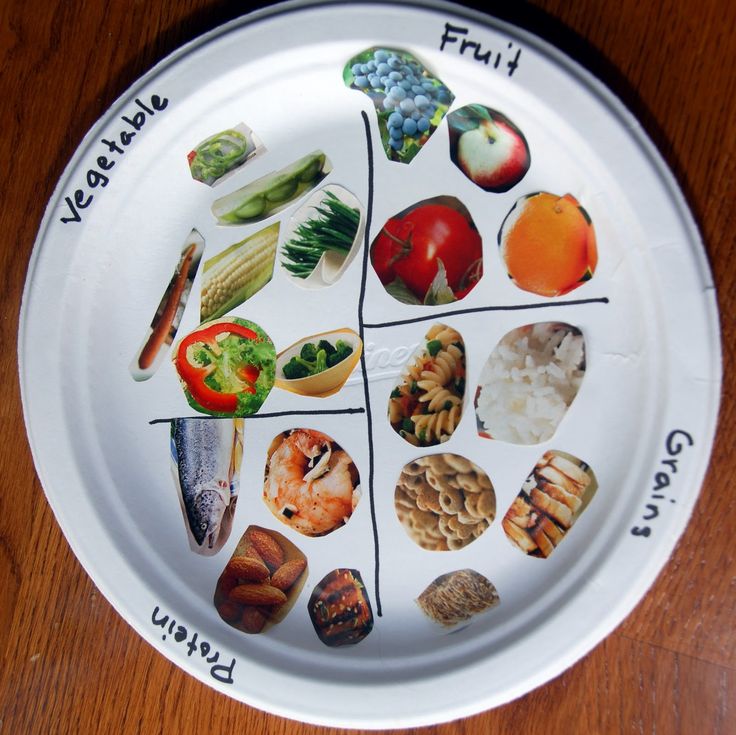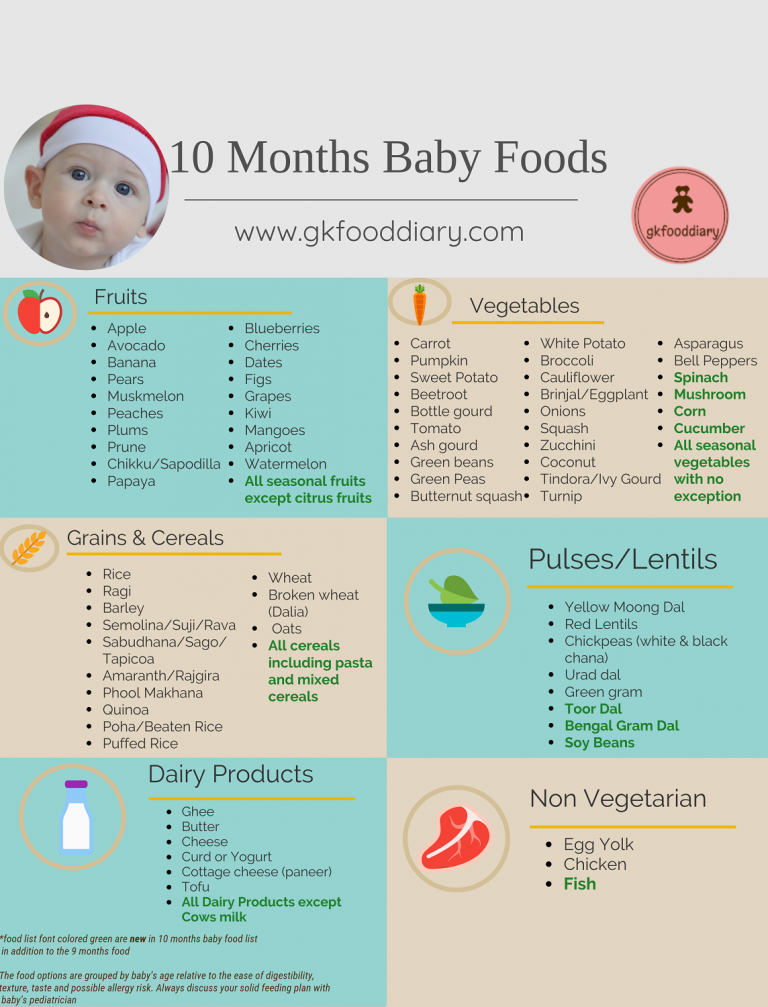Baby food pork
Pork for Babies - First Foods for Baby
When can babies eat pork?
Pork may be introduced as soon as a baby is ready to start solids, which is generally around 6 months of age. Like all meat, please take care to prepare and serve pork in an age-appropriate way as certain preparations can increase the choking risk. Looking for ribs? Visit our page on spare ribs.
Is pork a white meat or a red meat?
Pork is a red meat, though a generation of Americans know it otherwise.1 Confusion stems from an advertising campaign in the 1980s. At that time, United States pig farmers saw an opportunity when chicken began to compete with beef as America’s favorite meat. The industry launched a campaign to promote pork as “the other white meat” to an increasingly health-conscious American public, and the catchy phrase worked. Rich in fat and flavor, pork grew in popularity among Americans who were beginning to catch onto what many cooks have known for centuries: pork is delicious.
Humans have been raising domestic pigs and hunting wild boar for tens of thousands of years, and it has long been the world’s most consumed meat, despite two world religions that prohibit its consumption. Pork is cured to make bacon, sausage, and other preserved meats and freshly cooked into myriad delicacies, from Canadian tourtière to Cantonese char siu to Cuban lechon. In fact, cooks put the entire animal to use – from rich stews flavored with hocks and trotters, to crunchy cracklins made of fried skin, to jellies and sauces made of pork blood.
★Tip: When shopping for fresh pork, choose meat that is rosy pink to greyish pink in color. Avoid pork that smells bad, feels soft, or looks slimy.2 And if you buy a bigger cut, don’t worry about the rest going to waste, as cooked pork freezes very well. After cooking a big cut – such as pork shoulder or pork butt – portion the cooked meat into small containers to freeze for up to 6 months.3 This way, you’ll have easy access to child-sized portions at future mealtimes.
Is pork healthy for babies?
Yes. Freshly cooked pork can be a healthy meat for babies when served as part of a balanced diet. The meat offers plenty of essential nutrients, including protein, vitamin B12, choline, and zinc. It also contains a bit of vitamin D, potassium, and selenium. Together, these nutrients fuel a child’s cell growth and cognition and power the endocrine, immune, and nervous systems.
Keep in mind that the type of meat matters: freshly cooked pork is generally a healthier choice for babies and toddlers because processed pork products like bacon, ham, salami, and sausage are usually very high in sodium and contain additives like nitrates, which may negatively affect oxygen levels in the blood when consumed in excess.4 5 In addition, processed meats (including cured pork) appear to have an association with cancer, while studies of freshly cooked pork’s association with cancer are not as conclusive. 6 7 8
6 7 8
You may also consider how the animal was raised. Humans are just beginning to better understand the impacts of our use of pesticides, chemicals, and antibiotics. More than 90% of pigs in the United States are raised indoors on large-scale farms, given growth enhancers, and consume primarily grains like corn, soy, and wheat.9 10 These farming practices take a toll on the health of not just people but the land that we call home. While pork has less impact on the climate than beef, it consumes three times the amount of land and emits three times more carbon emissions than beans.11 Sustainable pork is a growing market, but agricultural challenges and the availability and price of the product may make it an impracticable option. Rest assured that the adage “all things in moderation” is a great way to serve pork and if pork is a major part of your family’s diet, this is a good area to spend a bit more for quality meat.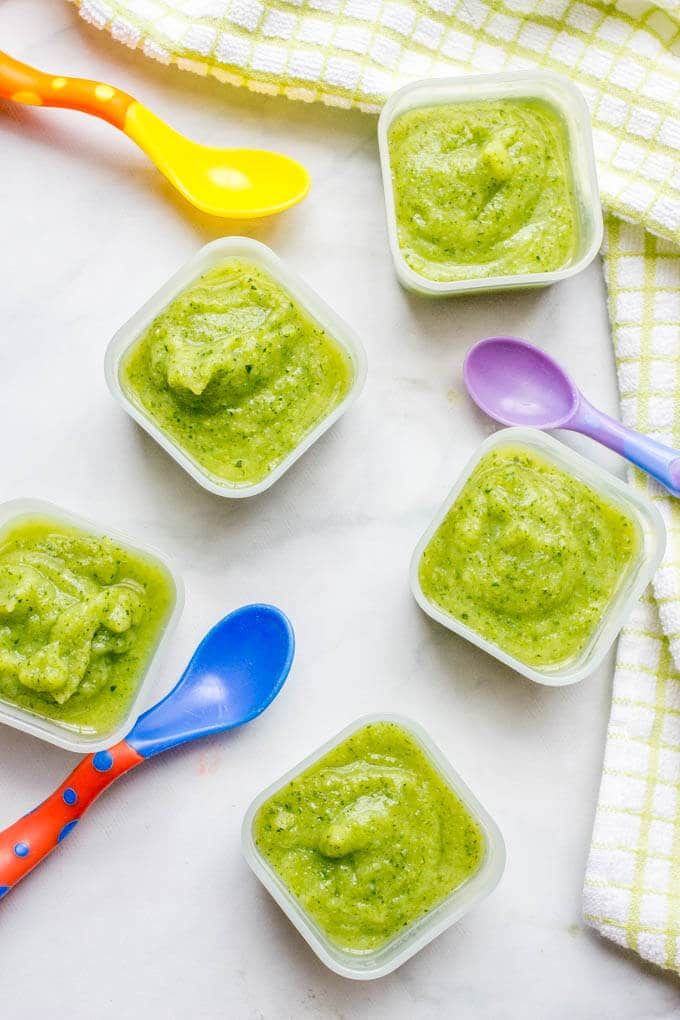
★Tip: Cook pork chops and other cuts of fresh pork to 145 degrees Fahrenheit (63 degrees Celsius) and cook ground pork to 160 degrees Fahrenheit (71 degrees Celsius) before serving.12 Undercooked and raw pork is a high-risk food and is associated with trichinosis (a parasite infection), taenesis (a parasite infection), yersiniosis (a bacterial infection), and other food-borne illnesses.13 14 15
Is pork a common choking hazard for babies?
Yes. All meat, especially chunks and cubes of meat, is a choking hazard for babies and toddlers. To minimize the risk, shred or mince the meat, serve just a little at a time, and serve directly on the child’s highchair tray or the surface of the table in front of the child (and not in a suction bowl or plate, which makes it easier to scoop up big handfuls of food). As always, make sure to create a safe eating environment, stay within arm’s reach of baby at mealtime, and check out our age-appropriate serve suggestions.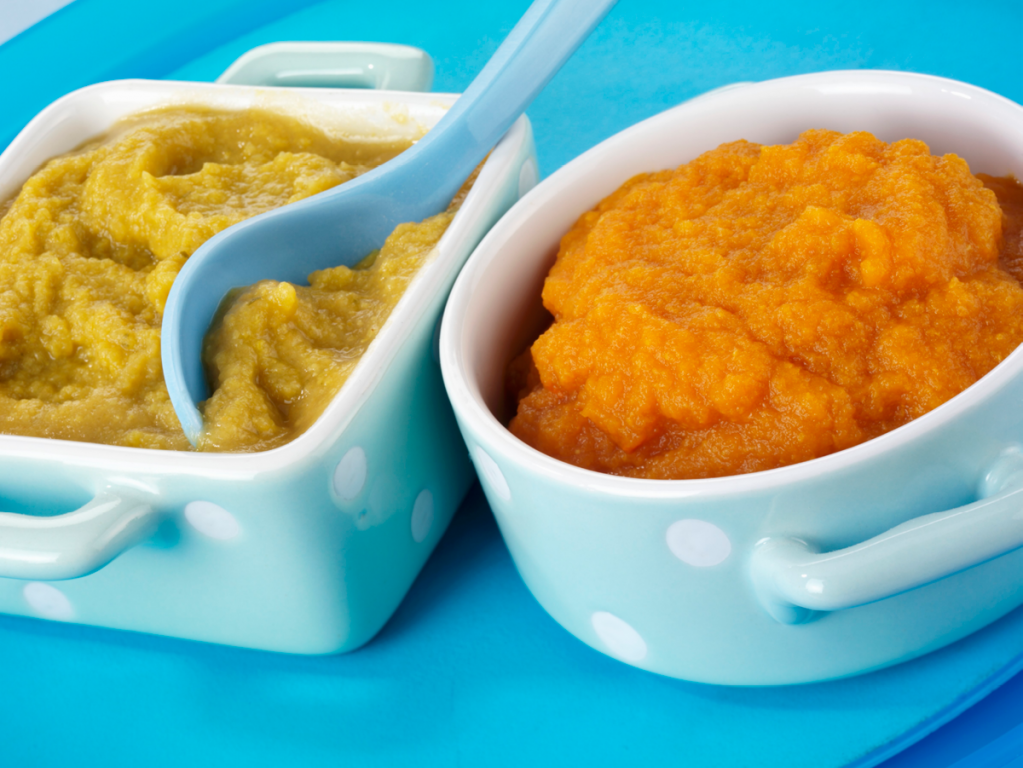
For more information on choking, visit our sections on gagging and choking and familiarize yourself with the list of common choking hazards.
Is pork a common allergen?
No. Pork is not a common food allergen, although reactions to pork have been reported.16 17 Certain tick bites (mainly the Lone Star tick in the continental United States, but other ticks in different parts of the world), are associated with the development of an allergy to galactose-alpha-1, 3-galactose (“alpha gal”), a sugar which is present in all non-primate mammalian meat. This results in a delayed allergic reaction 3-8 hours after red meat, such as pork, is consumed.18 However, some individuals with alpha gal allergy also react to small amounts of the sugar present in dairy products, gelatin, or organ tissues from mammals. Alpha gal allergy is more prevalent in the southeastern United States but is starting to become more common in other areas as the geographic distribution of the Lone Star tick expands.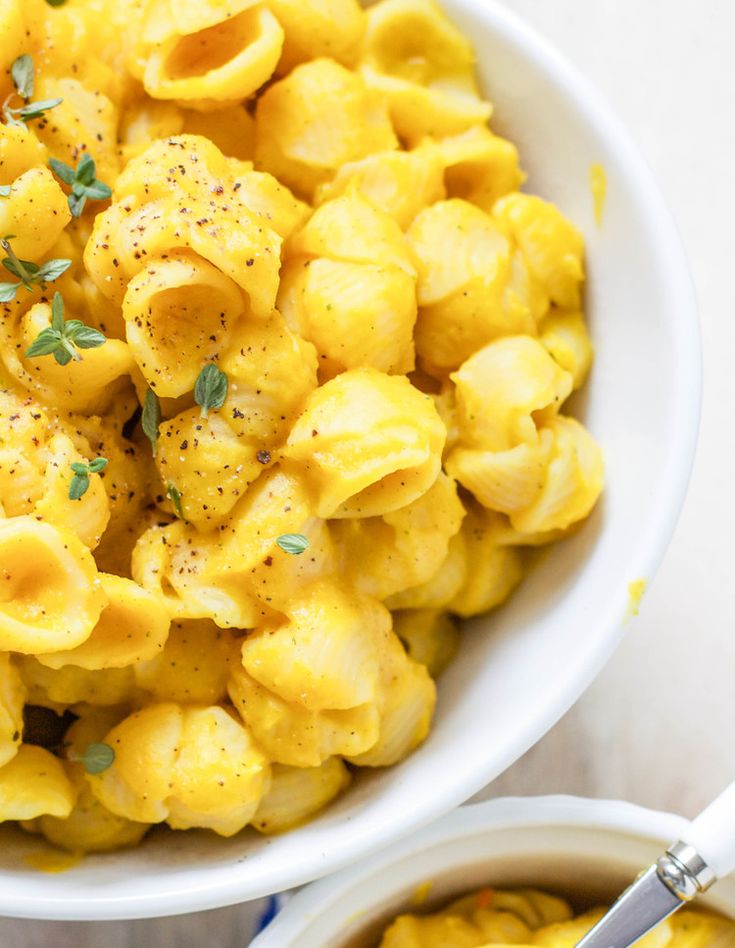 Although rare, some individuals with cat allergies may also develop a cross-reactive allergy to pork, a condition known as pork-cat syndrome.19
Although rare, some individuals with cat allergies may also develop a cross-reactive allergy to pork, a condition known as pork-cat syndrome.19
As you would do when introducing any new food, start by serving a small amount at first. If there is no adverse reaction, gradually increase the amount served over future meals.
Recommended Guide: Introducing Allergens to Babies
How do you prepare pork for babies with baby-led weaning?
Every baby develops on their own timeline, and the suggestions on how to cut or prepare particular foods are generalizations for a broad audience. Your child is an individual and may have needs or considerations beyond generally accepted practices. In determining the recommendations for size and shape of foods, we use the best available scientific information regarding gross, fine, and oral motor development to minimize choking risk. The preparation suggestions we offer are for informational purposes only and are not a substitute for child-specific, one-on-one advice from your pediatric medical or health professional or provider.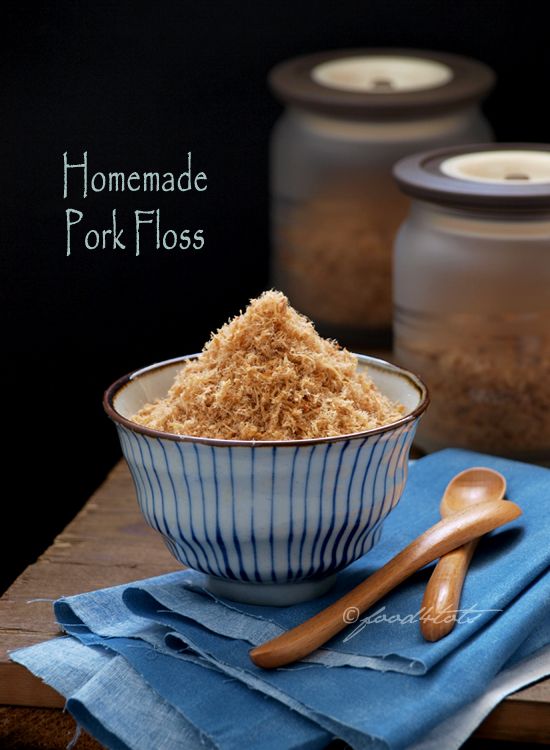 It is impossible to fully eliminate all risk of a baby or child choking on any liquid, puree, or food. We advise you to follow all safety protocols we suggest to create a safe eating environment and to make educated choices for your child regarding their specific needs. Never disregard professional medical advice or delay in seeking it because of something you have read or seen here.
It is impossible to fully eliminate all risk of a baby or child choking on any liquid, puree, or food. We advise you to follow all safety protocols we suggest to create a safe eating environment and to make educated choices for your child regarding their specific needs. Never disregard professional medical advice or delay in seeking it because of something you have read or seen here.
6 to 8 months old: At this age, bigger is better—and safer. Offer baby a pork chop on the bone with most of the meat cut off (make sure no parts of the bone are brittle or sharp). You can also serve large strips of pork chop about the size of two adult fingers held together or the pork chop bone (with any loose cartilage, gristle, chunks of meat, or bone removed) for baby to suck and munch on. Alternatively you could serve whole meatballs made from ground pork. Keep in mind that cooked pork can be quite resistive, and baby may not swallow much. If baby succeeds in biting off a too-big piece of meat, take a deep breath and give the child the opportunity to work with the food independently. Coaching baby to spit out too-big pieces of food by sticking out your own tongue can be helpful, too.
Coaching baby to spit out too-big pieces of food by sticking out your own tongue can be helpful, too.
9 to 12 months old : At this age, babies develop a pincer grasp (where the thumb and pointer finger meet), which enables the child to pick up smaller pieces of food. That’s when you know that the time has come to move down in size and offer bite-sized pieces of pork (avoid cube shapes) or shredded pork, ground pork, or minced pork. You may also continue with whole pork ribs, making sure to model dramatic chewing and, as needed, spitting for safety.
12 months and up: Continue to offer bite-sized pieces of pork chop; shredded, chopped, or pulled pork; and whole spare ribs. If you feel comfortable you can also offer thin matchstick pieces for your toddler to practice biting and tearing. The thinner the matchstick, the lower the risk.
Strip of pork chop for babies 6 to 8 months old. Bite-size pork shreds for babies 9 months and up.Need some meal-planning inspiration? Check out our breakfast, lunch, and dinner guides.
Recipe: Simple Pulled Pork in the Oven or Slow Cooker
Yield: 3 cups (950 milliliters)
Cooking Time: 3-6 hours
Age: 6 months+
Ingredients
- 3 pounds (1360 grams) boneless pork shoulder
- 3 cups (600 grams) canned tomatoes (whole, diced, or crushed, ideally from a BPA-free can)
- 8 garlic cloves, peeled
- 1 medium onion, peeled
- 1 teaspoon (20 grams) black pepper (optional)
- 2 teaspoons (20 grams) ground coriander (optional)
Directions
- Defrost frozen meat in the fridge before you plan to cook.
- Preheat the oven to 300 degrees Fahrenheit (148 degrees Celsius), or set a slow cooker on the “low” setting.
- Place pork into a large oven-safe pot with a tight-fitting lid or the slow cooker.
- Add the tomato, garlic, onion, and spice.
- Cover the pot or the slow cooker. Cook until the meat is easily pulled apart with a fork, about 3 hours in the oven or up to 6 hours in the slow cooker.
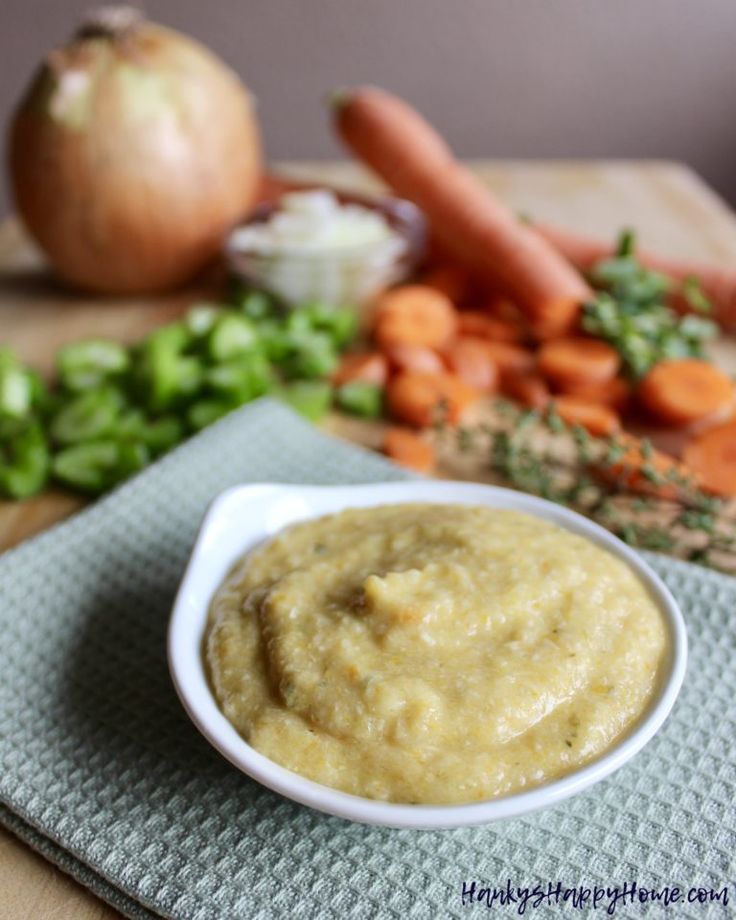 If you like, check that a pork’s internal temperature has reached 145 degrees Fahrenheit (63 degrees Celsius) before removing it from the heat.
If you like, check that a pork’s internal temperature has reached 145 degrees Fahrenheit (63 degrees Celsius) before removing it from the heat. - When the meat is ready, remove from the oven. Cool slightly. Transfer the meat to a cutting board. Cut away and discard any fat. Shred the meat. Place the shredded meat in a mixing bowl.
- Cook the sauce over medium-high heat until it has reduced slightly, about 10 minutes. Stir the sauce into the bowl with the meat. Cool to room temperature.
- Scoop some meat in front of the child. Exact serving size is variable. Let the child’s appetite determine how much is eaten.
- Serve and let the child self-feed by scooping with hands.
To Store: Cooked pork keeps when sealed in the fridge for 3 days or in the freezer for 6 months. Portion the meat into small containers before freezing for easy access to child-sized portions at future mealtimes.
Flavor Pairings
Fresh pork has a mild gamey and sweet flavor that pairs well with fruits and vegetables like apple, apricot, asparagus, beetroot, black beans, broccoli, butternut squash, cabbage, cassava (yuca), celery, chayote, garden pea, onion, pear, potato, rutabaga, snap pea, snow pea, and more. Pork also tastes delicious with rich foods like chestnut, coconut, and egg. Pork tends to absorb flavor, so try cooking the meat with acidic fruits like lime, orange, papaya, pineapple, or tomato and seasoning the meat with spices like chili, cinnamon, clove, coriander, cumin, or herbs like cilantro, dill, or thyme.
Pork also tastes delicious with rich foods like chestnut, coconut, and egg. Pork tends to absorb flavor, so try cooking the meat with acidic fruits like lime, orange, papaya, pineapple, or tomato and seasoning the meat with spices like chili, cinnamon, clove, coriander, cumin, or herbs like cilantro, dill, or thyme.
Reviewed by
J. Truppi, MSN, CNS
V. Kalami, MNSP, RD
K. Grenawitzke, OTD, OTR/L, SCFES, IBCLC, CNT
S. Bajowala, MD, FAAAAI. Board-Certified Allergist & Immunologist (allergy section)
R. Ruiz, MD Board-Certified General Pediatrician and Pediatric Gastroenterologist
- United States Department of Agriculture. (2019). Is pork white meat? Retrieved June 1, 2021.
- United States Department of Agriculture, Food Safety and Inspection Service. (2013). Fresh Pork from Farm to Table. Retrieved June 1, 2021.
- United States Department of Agriculture. (2019). How long can you freeze cooked pork? Retrieved June 1, 2021.

- Karwowska, M., Kononiuk, A. (2020). Nitrates/Nitrites in Food-Risk for Nitrosative Stress and Benefits. Antioxidants (Basel, Switzerland), 9(3), 241. DOI:10.3390/antiox9030241. Retrieved June 4, 2021.
- Ferysiuk, K., Wójciak, K.M. (2020). Reduction of Nitrite in Meat Products through the Application of Various Plant-Based Ingredients. Antioxidants (Basel, Switzerland), 9(8), 711. DOI:10.3390/antiox9080711. Retrieved June 4, 2021.
- Lippi, G., Mattiuzzi, C., Cervellin, G. (2016). Meat consumption and cancer risk: a critical review of published meta-analyses. Critical Reviews in Oncology/Hematology, 97, 1-14. DOI:10.1016/j.critrevonc.2015.11.008. Epub 2015 Nov 17. PMID: 26633248. Retrieved June 1, 2021.
- World Health Organization. (2015). Cancer: Carcinogenicity of the consumption of red meat and processed meat. Retrieved June 1, 2021.
- Carr, P.R., Walter, V., Brenner, H., Hoffmeister, M. (2016). Meat subtypes and their association with colorectal cancer: Systematic review and meta-analysis.
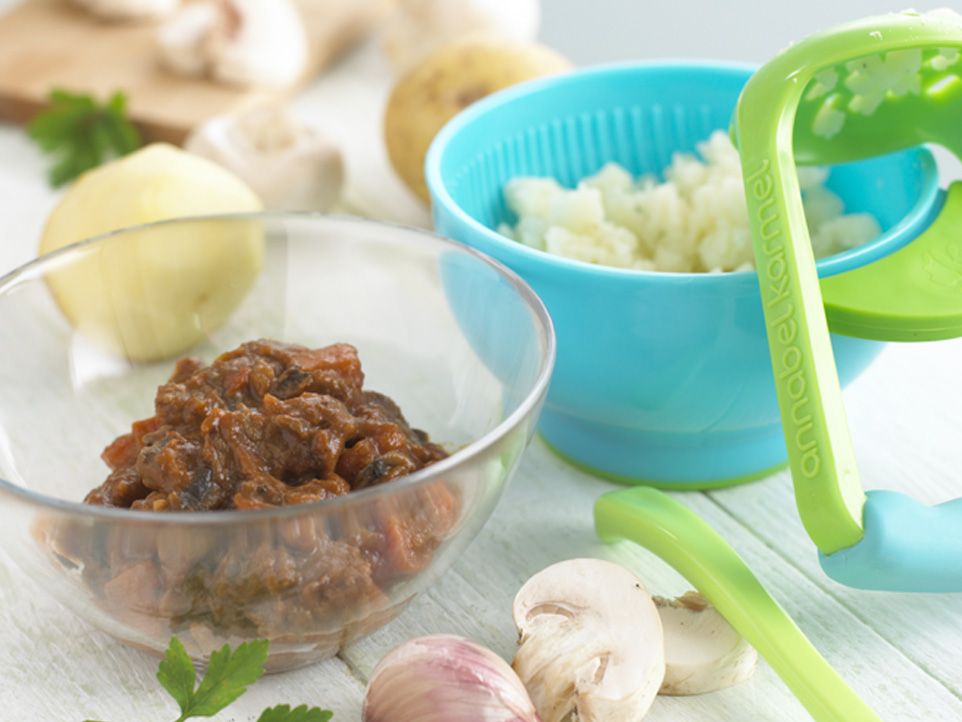 International Journal of Cancer, 138(2),293-302. DOI:10.1002/ijc.29423. Epub 2015 Feb 24. PMID: 25583132. Retrieved June 1, 2021.
International Journal of Cancer, 138(2),293-302. DOI:10.1002/ijc.29423. Epub 2015 Feb 24. PMID: 25583132. Retrieved June 1, 2021. - Park, H.S., Min, B., Oh, S.H. (2017). Research trends in outdoor pig production – A review. Asian-Australasian journal of animal sciences, 30(9), 1207–1214. DOI:10.5713/ajas.17.0330. Retrieved June 1, 2021.
- Kim, H.J., Nam, S.O., Jeong, J.H., Fang, L.H., Yoo, H.B., et al. (2017). Various levels of copra meal supplementation with β-Mannanase on growth performance, blood profile, nutrient digestibility, pork quality and economical analysis in growing-finishing pigs. Journal of animal science and technology, 59, 19. DOI:10.1186/s40781-017-0144-6. Retrieved June 1, 2021.
- Ranganathan, J., Waite, R. (2016). Sustainable Diets: What You Need to Know in 12 Charts. World Resources Institute. Retrieved June 1, 2021.
- United States Department of Health and Human Services. Safe Minimum Cooking Temperatures Chart. Retrieved June 1, 2021.
- World Health Organization.
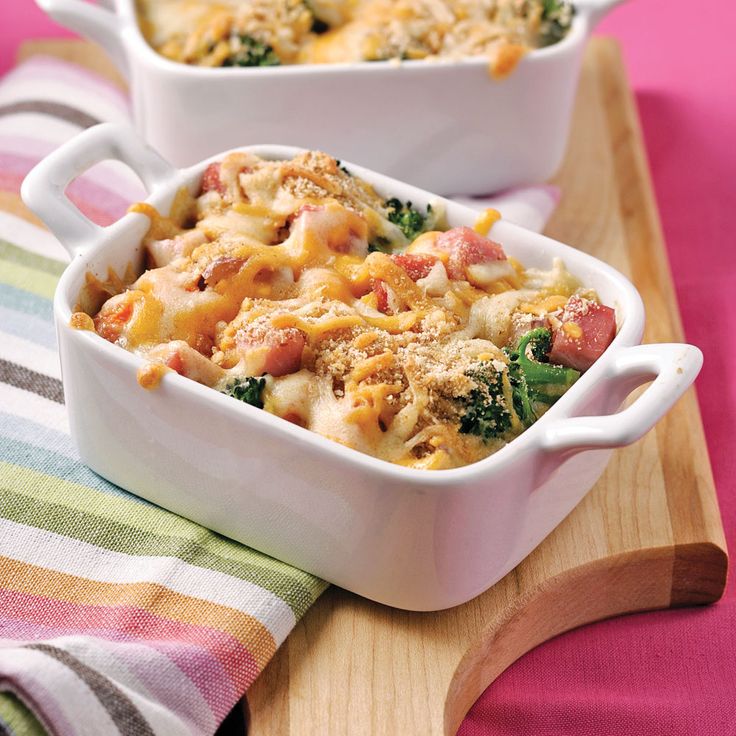 (2021). Taeniasis/cysticercosis. Retrieved June 17, 2021.
(2021). Taeniasis/cysticercosis. Retrieved June 17, 2021. - Centers for Disease Control and Prevention. Yersinia enterocolitica (Yersiniosis). Retrieved June 1, 2021.
- Centers for Disease Control and Prevention. Parasites – Trichinellosis (also known as Trichinosis). Retrieved June 1, 2021.
- American College of Asthma, Allergy, & Immunology. Meat Allergy. Retrieved June 1, 2021.
- Wilson, J.M., Platts-Mills, T. (2018). Meat allergy and allergens. Molecular immunology, 100, 107–112. DOI:10.1016/j.molimm.2018.03.018. Retrieved June 1, 2021.
- American Academy of Allergy, Asthma, & Immunology. Alpha-gal defined. Retrieved June 1, 2021.
- Wilson, J.M., Platts-Mills, T. (2018). Meat allergy and allergens. Molecular immunology, 100, 107–112. DOI:10.1016/j.molimm.2018.03.018. Retrieved June 1, 2021.
Pork and Apple Purée - Béaba USA
View all posts filed under Recipe by Age By Age5-6 Months6-9 months7-9 months10-12 months12-18 months18 months+
View all posts filed under Recipe by Ingredient By Ingredient1/2 limeacaiacai pureeagaveagave nectarall purpose flouralmond butteralmond flouralmond milkalmondsappleapple cider vinegarapplesapplesauceapricotsartichokeartichoke heartsasparagusasparagus spearsavocadobaby carrotbaby carrotsbaby cerealbaby formulababy spinachbaking powderbaking sodabananabananasbananas, slicedBanza chickpea pastabartlett pearbasilbasil leavesbeansBeefbeetsberriesblack beansblack cherriesblack pepperblack plumblack riceblack sesame seedsblackberriesblackberries (or mixed berries)blood orangeblue majikblueberriesblueberries or blackberriesblueberrybok choy, choppedbreadbreadcrumbsbreast milk or formulabrewed espressobroccolibroccoli floretsbrown ricebrown sugarbrussels sproutsButterbutter or coconut oilbutter, cut into 1/4 inch cubesbuttermilkbutternut or acorn squashbutternut squashcacao powdercannellini beanscantaloupecardamomcarrotcarrotscashewscauliflowercayenne peppercelerycelery stalkschamoycheddar cheesecheesecherriescherry tomatoeschervilchestnutchia seedschick peaschickenchicken breastchicken breast, cubedchicken brothchickpeaschili powderChinese cabbagechiveschopped red onioncilantrocinnamoncinnamon and/or nutmegClamatocoarse sea saltcoarse sea slat flakescocoa powdercocoa powder (unsweetened)coconutcoconut aminoscoconut creamcoconut flour or flour of choicecoconut meatcoconut milkcoconut oilcoconut oil or buttercoconut sugarcoconut sugar or brown sugarcoconut watercoconut water or milk of choicecoconut yogurtcodcod filletcollard greenscontainer non-fat Greek yogurtCooked beetscooked hamcoriandercorncorn flakes (no sugar)corn kernelscottage cheesecouscouscranberriescranberry juicecream cheesecreamy peanut buttercréme fraichecrumbled feta cheesecrushed tomatoescucumbercumincured spanish chorizocurrycurry powdercurry powercute into cubesdark chocolatedatesde-boned salmondiced bacondiced tomatoesdilldried apricotsdried basildried cranberriesdried dilldried figsdried lavender budsdried parsleydried white beansdurianedamameeggegg whiteegg whitesegg yolkeggplantEggselbow pastaendivesevaporated milkextra virgiin olive oilextra virgin olive oilfava beansfennelfeta cheesefeta cheese crumblesflat-leaf parsleyflaxseedflourflour or vanilla protein powderformula, breast milk or creamfresh basil leavesfresh blueberriesfresh cherriesfresh chivesfresh cilantrofresh coconut meatfresh cranberriesfresh dillfresh garlicfresh gingerfresh ground peanutsfresh ground pepperfresh lemon juicefresh lime juicefresh mintfresh mint leavesfresh mint, dill or cilantrofresh parmesanfresh parsleyfresh peachesfresh peppermintfresh pumpkinfresh rapsberriesfresh raspberriesfresh salmonfresh spinachfresh strawberriesfresh thymefrozen bananafrozen bananasfrozen bananas, slicedfrozen dragon fruit (pitaya)frozen peasfrozen pineapplefrozen strawberriesfull-fat coconut milkgaram masalagarlicgarlic clovegarlic clovesgarlic powdergarlic powder or 1/2 clove of garlicgingergingerbread spicegoat cheesegolden beetsgooseberriesgraham crackersgranny smith appleGreek gourygreek yogurtgreen applegreen beansgreen oniongreen pepperground cardamomground cinnamonground cinnnamonground clovesground corianderground cuminground flax seedground flaxseed or ground chiaground gingerground nutmegground nutmeg or cinnamonground sea saltground turkeyground white pepperguavahaddock fillethalbuthamheavy creamHoneycrisp applehoneydewice cubesItalian dressingjalapeñojalepenokalekiwikumquatsLamblarge carrotLaughing Cow cheeseleekleeksleeks (white parts only)lemonlemon juicelemon slicelemon zestlentilslettucelimelime juicelimesloosely packed kalelycheesmangomango, choppedmangosmaple syrupmatcha powdermedium tomatoesMexican lagermilkmilk of choicemilk of choice or carrot juicemilk or formulamini mozzarella ballsmintmint leavesMix-In Packmixed berriesmolassesmonterey jack cheese blendmozzarella cheesemuesli oatsmushroomsnectarinenon-fat Greek yogurtnoodle of choicenopal/prickly pears (washed, outer skin and seeds removed and cubed)nutmegnutritional yeastoat flouroat milkoatmealoatsof 1-2 horned melonsof one lemonokra podsolive oilolive oil or avocado oiloniononion powderonionsorangeorange juiceorange pepperorange zestoreganoorzopapayapaprikaparmesanParmesan cheeseParsleyparsnipPastapeachpeach or kumquatpeach or nectarinepeachespeanut butterpearpearspears or applespeaspeeled applespeeled carrotspepperpersimmonspine nuts or walnutspineapplepineapple (preferably frozen)pitted datesPlain Cream Cheeseplain greek yogurtplumplum tomatoplum tomatoesplumspomegranate seeds (fresh or frozen)pork tenderloinpotatopotatoespotatoes, cubedpowdered sugar for toppingprepared formulapumpkinpumpkin pie spicePumpkin pureepumpkin pureeepumpkin spice seasoningpurple (Benimo) sweet potatopurple cabbagepurple carrotspurple cauliflowerpurple potatoespurple sweet potatoesquick-cooking oatsquincequinoaraisinsraspberriesraw chia seedsraw chickenraw honeyraw pecansraw unsalted cashewsraw walnutsred bell pepperred onionred pepperred pepper flakesred peppersred potatored seedless grapesrhubarbricericottaripe bananaroast turkeyrolled oatsroquefort cheeserose waterrosemarysage leavessalmonsaltSalt & peppersalt & pepper to tastesalt and peppersalt and pepper to tastesalt to tastescallionssea saltsea salt and pepper to tasteseasoned bread crumbssemi-sweet or dark chocolate chipssemisweet chocolatesesame oilsesame seeds to garnishshallotshallot, mincedsharp white cheddarsherry vinegarShiitake mushrooms, slicedshortbread cookie or biscuitShredded Mozzarellashrimpskim milkslivered almondssmall onionsmall sweet potatosoy saucespinachsplash of watersquashstale breadstarfruitSteviastrawberriessugarsugar or natural sweetenersugar pumpkinsugar, dividedsugar/nautral sweetenersummer squashsunflower oilsweet applesweet applessweet paprikasweet potatosweet potato or yacónsweet potato, cubedsweet potatoessweetened condensed milkswiss chardTabasco saucetahinitajintamarind candy strawstamarind pastetarragontender kale leavesthin crust pizza doughThymetomatotomato pastetomato saucetomatoestoppings of choice (we love coconut, chia seeds and almond butter for toddlers and adults!)tortillatumericturkeyturkey, white meat onlyturmericturnipturnipsugli fruit juice or guava juiceuncooked beetunsalted butterunsweetend coconut flakesunsweetened cocoa powderunsweetened coconutunsweetened coconut milkunsweetened vanilla almond milkvanillavanilla bean extractvanilla bean podvanilla extractvanilla Greek yogurtvanilla yogurtvealveegetable brothvegan chocolatevegetable brothvegetable oilvegetable stockvegggie stockveggie brothwalnut oilwalnutswarm waterwaterwater, breast milk or stockwater, pineapple juice, or milk of choicewatercresswatermelonwheat flourwhipped toppingwhite beanswhite chocolatewhite mushroomswhite onionwhite or brown ricewhite potatowhite sugarwhole milkwhole wheat flourWhole wheat shell pastaworcestershire sauceyamyellow bell pepperyellow onionyellow onion, choppedyellow pepperyellow squashyogurtyoung spinachZa'atarzucchinizucchini, sliced
View all posts filed under Recipe by Type By TypeAppetizerBreakfastDessertDrinkMainMain DishSideSnackFishFruitsGrainsItalianMediterraneanPorkPoultrySweetsThaiVegetarianVeggies
//in 12-18 months, 18 months+ apple, dates, pork tenderloin Main, Main Dish Fruits, Pork 0 stars /by Julianna KlepackiWhen we’re creating new purée recipes, we often begin with adult dishes and simplify them so they’re baby friendly. In this case, we simplified a pork and apple compote recipe – not only is this recipe full of protein, but the apple and date sweetens the purée to appeal to baby’s taste buds.
In this case, we simplified a pork and apple compote recipe – not only is this recipe full of protein, but the apple and date sweetens the purée to appeal to baby’s taste buds.
- Course Main, Main Dish
- Cuisine Fruits, Pork
When we're creating new purée recipes, we often begin with adult dishes and simplify them so they're baby friendly. In this case, we simplified a pork and apple compote recipe - not only is this recipe full of protein, but the apple and date sweetens the purée to appeal to baby's taste buds.
Ingredients
Instructions
- Put the pork, apple and date into the steamer basket.
- Pour water into the tank (level 3).
- Start the cooking process.
- When the meat and fruit is cooked, place them in the blending bowl and set aside some of the cooking liquid.

- Blend, adding some of the cooking liquid until the desired consistency is reached.
Recipe Notes
As always, please check with your pediatrician before introducing new foods to your baby.
Share this entry
Pork in baby and functional food products
Standards / RAW
YOR
Pork in baby and functional food products
A.V. Sciences, O.K. Derevitskaya, Ph.D. tech. Sciences, GNU VNIIMP them. V.M. Gorbatov of the Russian Agricultural Academy
Describing the state of affairs in the organization of the production of healthy nutrition for the children's population, one cannot ignore the issue of the most important factor in the safety and quality of children's food - providing enterprises with environmentally friendly raw materials. The shortage of meat raw materials of the required quality and safety is a serious obstacle to increasing the output of baby and school food products.
The shortage of meat raw materials of the required quality and safety is a serious obstacle to increasing the output of baby and school food products.
The basis for the production of high-quality baby food products that meet the level of domestic and international standards should be environmentally friendly livestock raw materials coming from farms located in territories that are free from zoonotic, zooanthropological diseases, in which animals are kept in strict observance of veterinary and zootechnical rules rearing and fattening with mandatory examination of animals for prion diseases, especially dangerous for humans.
In terms of the content of toxic substances, raw meat for baby food must comply with standards that guarantee the safety of consumer health. The highest requirements are placed on meat raw materials for the production of food products for young children. Such raw materials belong to the group of organic (environmentally safe) and can be obtained from young animals when they are grown and fattened according to a special technology without the use of hormonal drugs, antibiotics, pesticides and other harmful substances using environmentally friendly feed.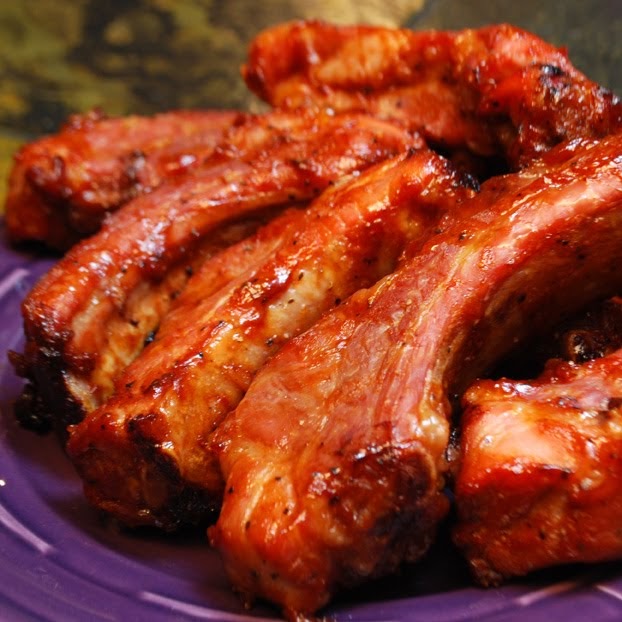
When raising animals, the requirements for maximum permissible concentrations of toxic substances in soil, feed and water must be observed. Feed used in growing and fattening animals must be high-energy and benign, and the level of content of toxic elements must not exceed the permissible norms. Special requirements must be observed when cultivating fodder crops on farms in the resource zone.
An increase in the number of pigs has been observed in our country in recent years. State measures to support pig breeding have a positive effect - the pork market has a positive development trend and, in the period 2011-2014, it will grow by an average of 6-8% annually. According to experts, the volume of pork production in Russia in 2010 increased by almost 15%.
Until recently, domestic nutrition experts recommended to children only low-fat types of raw meat - veal, beef, poultry - as a source of complete animal protein. Pork, on the other hand, was undeservedly overlooked.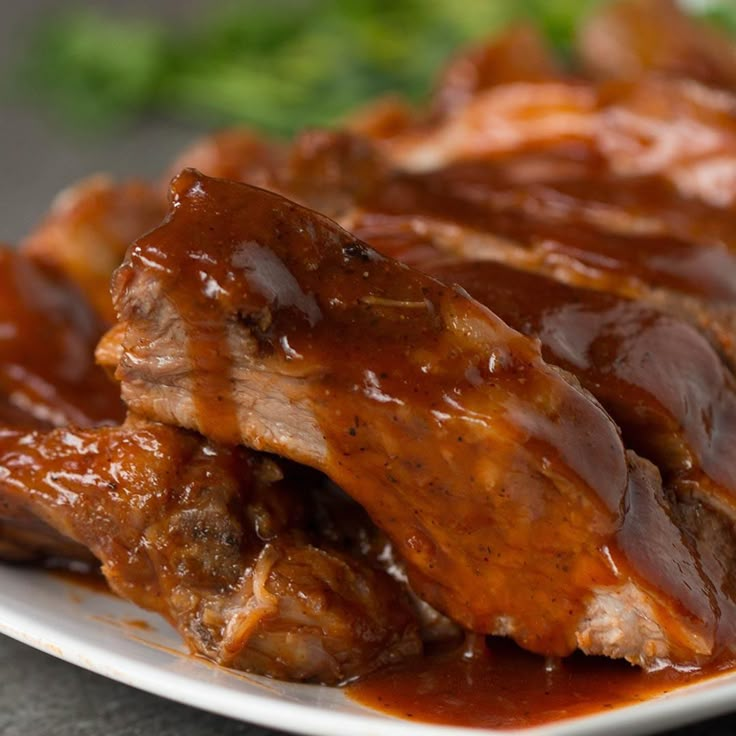 And there is still a negative attitude of both parents and some pediatricians to the use of pork in the nutrition of young children due to the imbalance in the ratio of protein and fat in it.
And there is still a negative attitude of both parents and some pediatricians to the use of pork in the nutrition of young children due to the imbalance in the ratio of protein and fat in it.
This problem can be solved by the use of industrial products in the nutrition of children, since nutritional values are strictly standardized in the finished product for baby food. Everyone knows that meat is necessary for any child as the main supplier of animal protein and iron to the body. Protein needs organ-
Key words: pork, canned baby food, functional food, national standard, fatty acids.
nism for growth and development, and the need for it in a child in terms of a unit of body weight is higher than in an adult, since in childhood the processes of growth and development are most intense, while the share of protein of animal origin (milk, meat, fish) should account for at least 8090% of its total. As for iron, its deficiency causes anemia (anemia), and it is absorbed from meat products much better than from vegetable products.
However, one should not forget that in addition to protein, a child also needs fat, and pork is the most valuable of all animal and vegetable fats. In its composition, it is as close as possible to the fat of the ideal food for a newborn - breast milk. Essential fatty acids, especially linoleic and arachidonic, present in pork fat, are essential for a growing body, since their deficiency retards the physical development of the child.
In the production of products for young children, lean pork (mass fraction of fat 13-17%) or semi-fat pork with a mass fraction of fat 2832% is used. Semi-fat (mass fraction of fat 30-50%) and fatty (mass fraction of fat 50-60%) pork is widely used in sausages for feeding children over 3 years old. 9
No. 3 June 2012 ALL ABOUT MEAT
45
fiP
RAW MATERIAL / Standards
achieved through the use of dairy or vegetable components. This makes it possible to provide a normalized indicator of the mass fraction of fat in the pork product, which for canned meat is no more than 12%.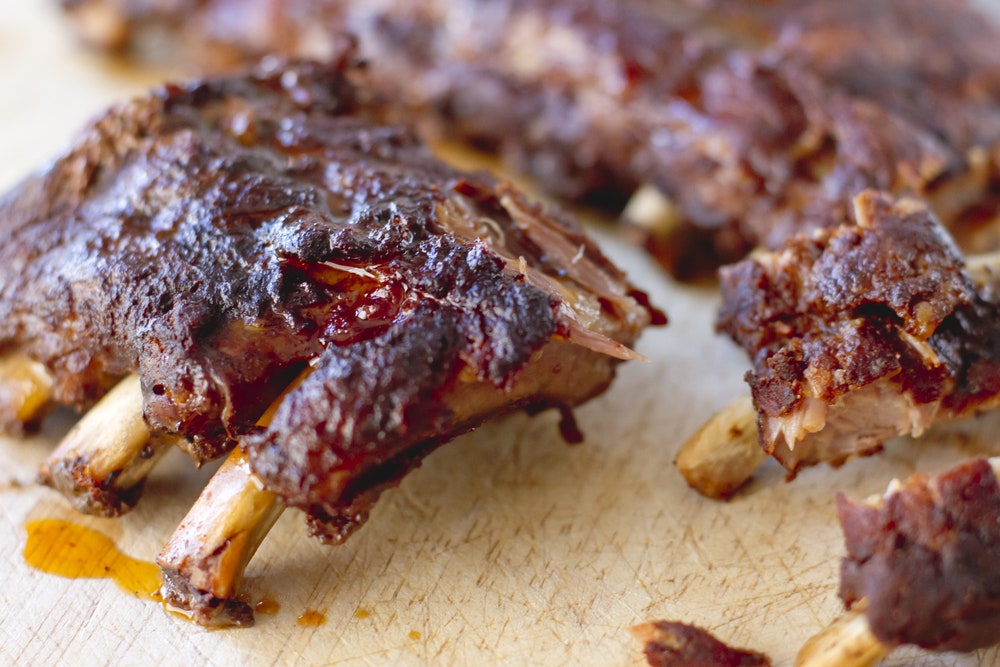 When making a mono-product from pork, you can get a balanced product only when using lean meat.
When making a mono-product from pork, you can get a balanced product only when using lean meat.
Meat raw materials for the industrial production of children's products undergo strict control for all toxicological and microbiological indicators, which cannot be said about meat purchased on the market or in a store. Many years of experience in the plant for the production of canned meat for children in the city of Tikhoretsk, Krasnodar Territory has shown that it is impossible to produce products of the required quality from ordinary meat raw materials.
In order to provide enterprises producing meat-based baby food with the opportunity to produce products of high quality and safety, specialists from the All-Russian Research Institute of the Meat Industry have developed GOST R 54048-2010 “Meat. Pork for baby food. The standard regulates the age of pigs and the requirements for their fattening, not allowing the use of meat from animals grown with the use of growth stimulants, hormonal drugs, feed antibiotics, synthetic nitrogen-containing substances, microbial synthesis products and other types of non-traditional feed products.
In addition, the standard contains characteristics of carcasses, including bacon thickness (not more than 3.0 cm), toxicological and microbiological indicators, requirements for the content of antibiotics, pesticides and radionuclides. The content of total phosphorus in pork should not exceed 0.2%, which will exclude the possibility of supplying raw materials to the production of baby food products, in which phosphates and moisture-binding food additives containing them are introduced.
The need to develop such a standard is due to the fact that currently large Russian manufacturers of canned meat for children (Unimilk, Wimm-Bill-Dann,
"Khame", baby food factory "Faustovo" and others) have a range of pig meat products for baby food. Enterprises successfully produce mono-pork products for feeding young children, starting from 6 months, which made it possible to include pork puree in the draft national standard for canned food for complementary foods for children in their first year of life, developed at VNIIMPE.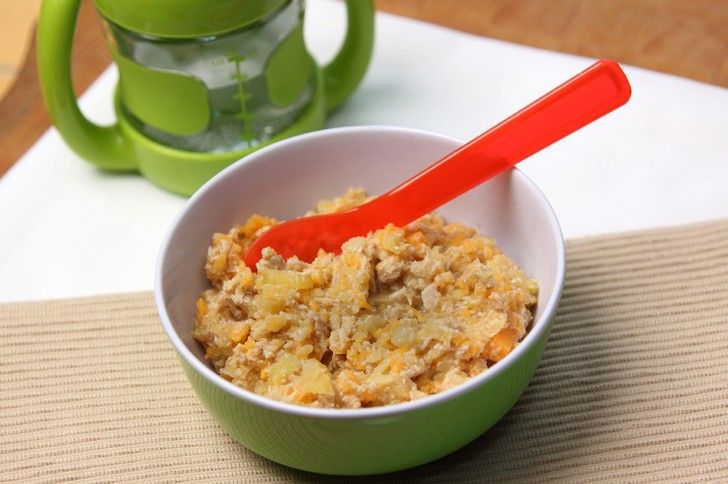
A wide range of canned meat and vegetable products for young children has been developed (GOST R52198-2003). In these canned foods, semi-fat pork is used together with various vegetables or cereals, which increases their total nutritional value due to the combination of various nutrients and allows you to expand the range of products for food at home and in childcare facilities
Assortment of large-sized semi-finished pork products part, hip part, shoulder part) is produced by many meat industry enterprises for the manufacture of food products for children over 1.5 years old in organized groups. Large-sized semi-finished products from pork are included by the Department of Consumer Market and Services of the Government of Moscow in the register of products for providing school-basic canteens in Moscow. Portioned and small-sized semi-finished products will find their place in the retail trade in the manufacture of products for children and as organic meat for adults who care about their health.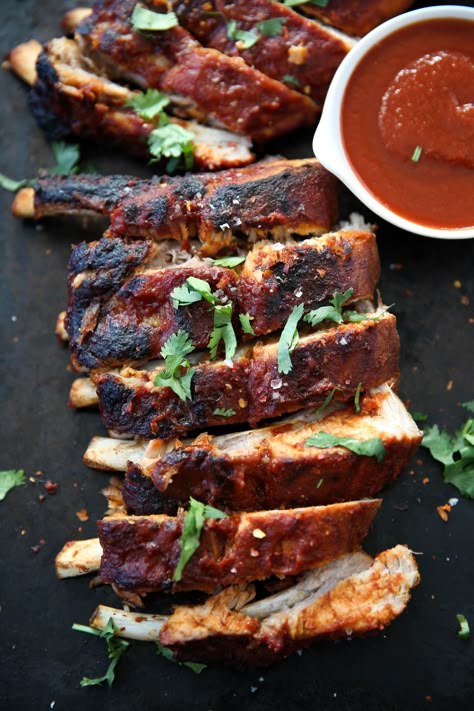
The possibility of using pork in the production of a wide range of canned food for young children, including for medical nutrition, is substantiated by research by specialists from the baby nutrition laboratory of the All-Russian Research Institute of the Meat Industry together with employees of the Research Institute of Nutrition of the Russian Academy of Medical Sciences.
Taking into account the functional properties, pork is chosen as a raw material for children's canned meat for therapeutic and prophylactic purposes. From the point of view of functional nutrition, meat is an indispensable food product, being a supplier of the most important macro- and micronutrients to the body: protein, iron, selenium, zinc, B vitamins, satisfying up to 30% of the daily human need for these substances. When choosing raw materials for canned children, it is necessary to use the functional advantages of each type of meat to the maximum, correlate them with the age characteristics of various categories of children, and their nutritional status.
Pork is a low-allergenic raw material, which allows it to be widely used in the creation of a series of medical products, including for children suffering from food allergies from the first days of life, intolerance to milk and beef proteins. Currently, due to the deterioration of the environmental situation, the number of such children reaches 10-15%. The use of therapeutic and prophylactic products based on pork can eliminate the manifestations of food allergies, dyspepsia and normalize the nutritional status of the child. The positive effect has been established by numerous studies and confirmed by clinical trials.
So, on the basis of medical and biological requirements for the production of therapeutic and prophylactic canned food and taking into account the rational use of raw materials, canned food "Meat puree for children, therapeutic and preventive nutrition" has been developed, intended for children suffering from iron deficiency anemia and food allergies, using as the main raw material of semi-fat pork with a adipose tissue content of 28-32%.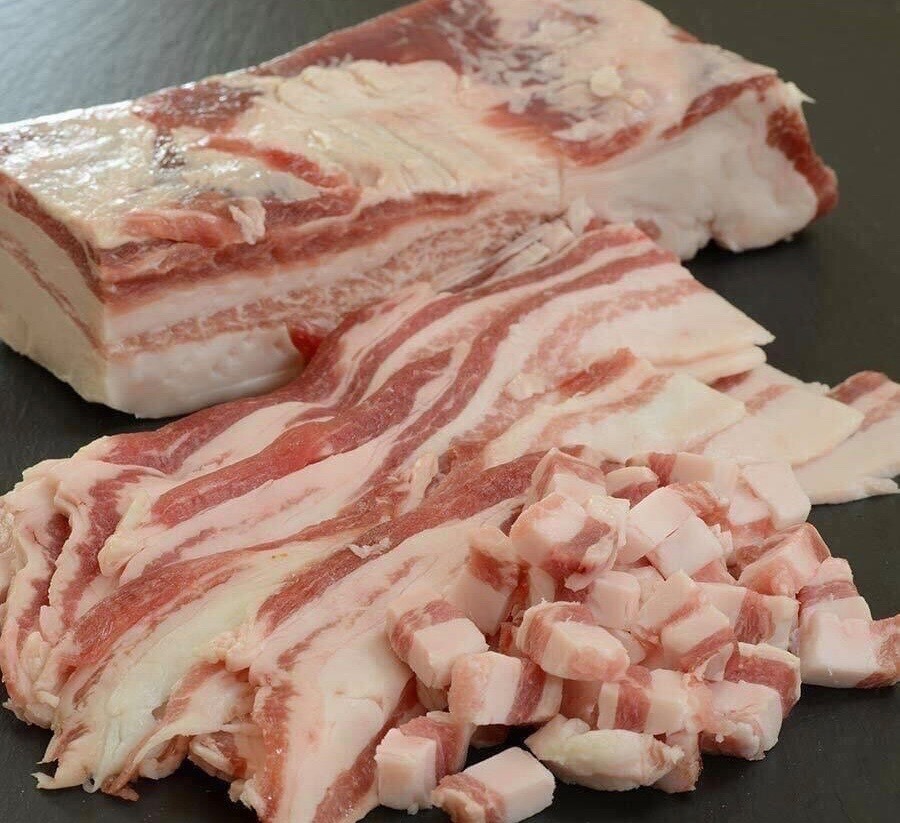
A series of therapeutic and prophylactic canned foods for children based on low-fat 9Pork. Canned food is produced both for healthy children and for children suffering from various pathologies. Clinical trials conducted jointly with the Institute of Pediatrics have shown their high therapeutic efficacy in celiac disease and lactase deficiency. It should be noted that there are no analogues of such canned food among foreign products.
Pork produced in accordance with GOST R 54048-2010 can also be widely used in the manufacture of dietary and functional meat products for the adult population. In the laboratory of technology for children's, therapeutic and prophylactic and specialized products of VNIIMP, a series of products for therapeutic and prophylactic purposes using pork has been developed. These are products such as canned meat and vegetable "Fricasse" with a cleansing effect and are intended for
prevention of deficiency of minerals, vitamins, dietary fiber, "Semi-finished minced meat for preventive nutrition" are intended for patients with hypertension, sausages for pregnant and lactating women.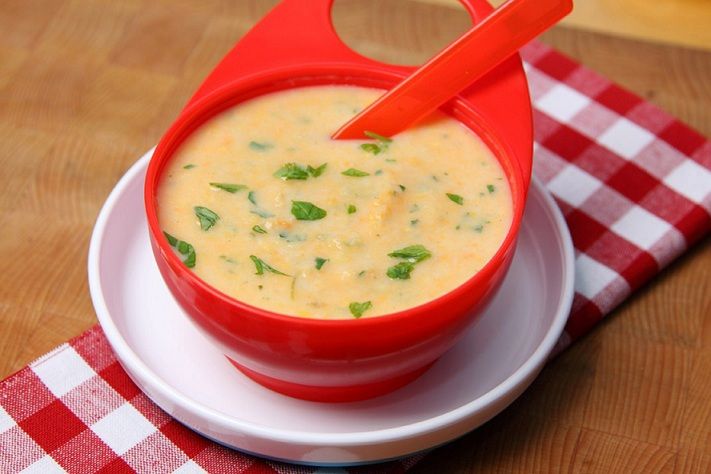 When developing them, the principle of additional enrichment with functional ingredients that have alimentary and therapeutic efficacy in certain pathologies was taken into account.
When developing them, the principle of additional enrichment with functional ingredients that have alimentary and therapeutic efficacy in certain pathologies was taken into account.
In the context of a favorable forecast for the development of pig breeding in Russia, domestic pork for baby food, produced in accordance with the national standard, has great prospects for further use in the above areas and in the development of a new range of children's products, as well as functional and medicinal products.
Literature
1. Yu.I.Kovalev. A model for the development of pig breeding in Russia// Vse o myas, No. 4, 2011
2. K.S. Ladodo Rational nutrition of young children
(monograph) Ladodo K.S. - 2nd ed., revised. and additional - Miklosh, 2009. - 320 p. Theoretical and practical aspects of obtaining environmentally safe livestock raw materials and the production of nutrient-adequate meat baby food products. Monograph.- M.: VNIIMP, 2001.-245p.
5. M.A. Aslanova, A.V. Ustinova, I.A. Govor Boiled sausages for pregnant and lactating women // Food industry, No. 3, 2010 Konstantinova Derevitskaya, +7 (495) 676-96-18
M.A. Aslanova, A.V. Ustinova, I.A. Govor Boiled sausages for pregnant and lactating women // Food industry, No. 3, 2010 Konstantinova Derevitskaya, +7 (495) 676-96-18
Pork in baby food ~
Everyone knows such meat as pork. This is the meat of animals (pigs) kept at home. This meat is very tasty fried, boiled and stewed. Some nations, such as Jews and Muslims, do not eat pork. But the Indians eat pork, and this meat is the main one for them, since they do not eat beef.
Young pork meat is light pink in color with a dense texture, good meat should be free of any membranes. Old pork is distinguished by the dark red shade of meat, on which there are a lot of films. It is dry and rough. It is undesirable to buy old pork.
Useful properties of pork
There is a lot of vitamin B in pork meat . The protein of this meat produces breast milk very well, so it is recommended to eat it for lactating women. Pork meat is very well absorbed by the human body and well helps to process food in the stomach.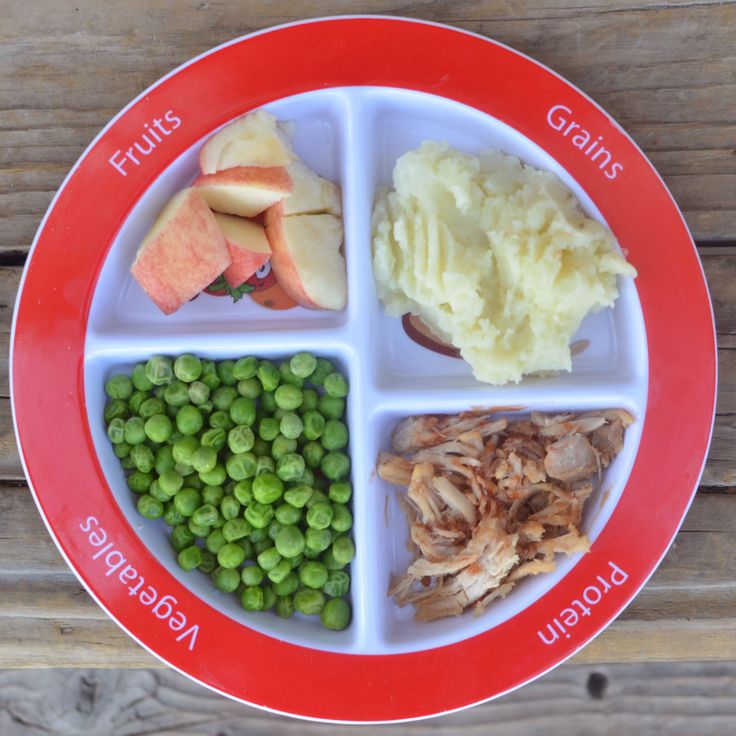
The selenium content in pork helps fight depression. It also helps to strengthen the human skeletal and muscular system. Favorably affects the work of the cardiovascular system, reduces the production of cholesterol plaques. Pork is tender and soft meat that chews easily, which is very important for children . It can be cooked faster. Due to the small fat layers, the cooked meat is very juicy.
By the way, adults people with allergies should eat this meat with great care. The daily norm for such people should not exceed 150 gr. pork per day. There is a risk that improperly cooked pork can cause diseases such as helminthiasis. But in general, the harm from pork meat is small.
When and how to give pork to a child?
In order not to cause an allergy to pork meat in a child, you should start feeding him with half a teaspoon.
The meat must be thoroughly mashed. It is necessary to introduce pig meat into complementary foods only after the child has already received complementary foods from rabbit, turkey and beef meat.
For baby food, it is very important to take lean and young pork meat. As a rule, pork in complementary foods is introduced after eight months . If parents notice a tendency to allergies in a child, then pork should be introduced into complementary foods only after ten months of age.
Children who have low hemoglobin or a disease such as rickets are allowed to add pork to complementary foods from the age of six months.
Meat in baby food.
How to cook pork for a child?
When preparing pork for a child, it must be thoroughly boiled, and when roasting meat in the oven, the temperature is set to more than 750. Then at this temperature all bacteria, if any, die.
Toddlers are fed carefully minced pork with a consistency similar to mashed potatoes. For older children, they are cut into small pieces, and for schoolchildren they are also given in portions in a small piece. It is especially recommended to eat pork meat for children who play sports, as muscle mass grows from it.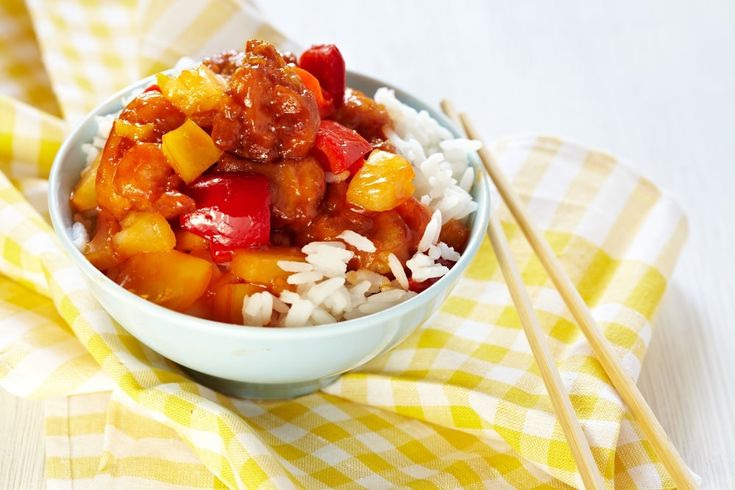
What to cook with pork for a child?
It is recommended to give meat to children with vegetables. From lean pork meat, children can cook various meatballs and puddings. To do this, lean meat is scrolled twice with a meat grinder or blender, very finely chopped (you can also grind with a blender or meat grinder) carrots and onions are also added, everything is mixed, small balls are made, they ate meatballs, add rice and cook them. And if it is a pudding, then milk is added to the meat puree and baked in the oven.
Baby food with pork
Mostly parents feed their children canned meat (including pork) bought in supermarkets. Such food is not harmful for children, as it has a balanced composition, and very strict control of ready-made canned food ensures healthy nutrition for babies.
Before giving baby food with pork or any other meat, make sure that it is not expired. A jar of baby food must be warmed up before use, it is best to do this in a water bath.
Buy baby food only in large supermarkets or pharmacies. Canned food should be from the best producers, even if the price is slightly higher. There is no need to save on the health of the child. It is very good if the recommendation from the Russian Academy of Medical Sciences is indicated on the package.
Quality baby food from meat is produced by such well-known companies as Agusha, Gerber, Top-Top, Humana, Nestle.
Children's meat puree - an overview of Russian manufacturers.
Children's meat puree - an overview of foreign manufacturers.
Today you can buy baby food through various online shopping sites. And it's very convenient. With such a purchase, you can choose canned food from a trusted manufacturer.
It is very important to remember that good baby food is very important for the health of the baby and the peace of mind of the parents.
Read our other articles in the "Complementary foods" section:
Beef in baby food.



